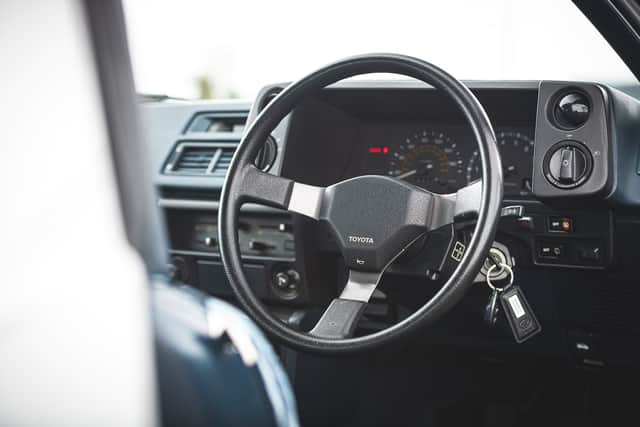Getting your classic car ready for spring: expert tips for bringing a cherished classic out of winter storage


With the weather finally improving and the prospect of the Easter holidays on the way, now is the time many classic car enthusiasts will be bringing their pride and joy out of winter storage.
After months tucked away from the elements it’s tempting to simply hop in and head for a drive in the sunshine but experts are urging owners to make sure their classic is safe and prepared for a spring and summer on the road.
Advertisement
Hide AdAdvertisement
Hide AdGraham Bothamley is Toyota UK’s press fleet manager and a Toyota Master Technician, and has more than 100 cars under his care, from the latest Yaris to classic 1980s AE86 Corolla coupes and one of the original Lexus LFA supercars.
He has shared his top 10 tips for getting a classic out of storage and back on the road, from essential safety measures to simple maintenance.


“The most important and first thing is safety,” says Graham. “Cars which have sat for a long time can develop issues and your first task is to make sure your classic is safe to drive.
“Some items can perish or degrade when not in use, others can corrode, and then there’s always the issue of rodent damage, it’s amazing how much one small mouse can cost you.
Advertisement
Hide AdAdvertisement
Hide Ad“Once you have established that it’s safe, you need to make sure it’s ready and isn’t going to leave you stranded, or with a big bill. A bit of time and mechanical sympathy now will help ensure a brilliant season of driving your old car”
Here are Graham’s top ten tips for bringing your classic out of storage for a great season of enjoying the open road.


- Check the oil levels and look for signs of leaks. Pipes can develop leaks even when not in use as they expand and contract with wide changes in temperature through winter and into spring. Inspect the fuel lines for the same reason (and double check whether your classic can run on E10 petrol with those original lines). Pop off the fuel filler cap and smell the fuel vapour to make sure the petrol in the tank is okay after storage.
- Check the coolant level and look for any signs of leaks or corrosion in the system. Make sure that when you’ve completed this checklist you then warm up the engine and check again for leaks in the system when it’s hot – better find out on the drive than out on the road.
- Check brake pedal feel, fluid level and condition. Check brake hoses for cracking. If your car hasn’t moved for some time old brake systems can suffer. Don’t assume it will stop like it did the day you put it away for winter.
- Check if the handbrake releases correctly, inspect the brakes visually and then when you first start the car drive slowly just a few feet, and the same in reverse, to see if there are any binding or dragging noises or if the vehicle continues to move after the brakes are applied.
- Check / charge 12v battery – top up if required (a “trickle” charger to use through the winter is a great addition if you don’t already have one).
- Check exterior lights for correct operation.
- Check windscreen washer fluid level, wiper operation and blades for splitting (rubber can dry out and crack and split in storage, especially in well-insulated, warm and dry garages).
- Check condition of the tyres: correct pressures, look for cracks, check tread depth. Also check wheel nuts are still set to the correct torque.
- Check for rodent damage. Our furry friends can be a real problem. Use a torch to check for chewed cables and wires, and for signs of nesting in the engine bay and wheel arches. A nest can interfere with safe operation and even present a fire risk and chewed wires are a real safety issue. Take particular care to check the air filter as rodents seem to like the texture of the element when building a home! Remove the airbox and inspect thoroughly.
- Get an MOT done even if it’s not a legal requirement. It’s a great way to get a second safety check carried out even if your classic is registered as “Historic” and MOT exempt.
And Graham has one final tip too. “After your proper first drive in the car it’s a good idea to run through most of this list again. Heat, expansion, vibration and so on can expose issues which may have been hidden when the car was stationary. But most importantly of all, enjoy it.”
Comment Guidelines
National World encourages reader discussion on our stories. User feedback, insights and back-and-forth exchanges add a rich layer of context to reporting. Please review our Community Guidelines before commenting.
